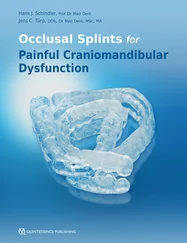But the Schindler women, left untattooed, were told to dress again and taken to a windowless hut in the women’s camp. There, in the center of the floor, stood a sheet-iron stove housed in bricks. It was the only comfort. There were no bunks. The Schindlerfrauen were to sleep two or three to a thin straw pallet. The clay floor was damp, and water would rise from it like a tide and drench the pallets, the ragged blankets. It was a death house at the heart of Birkenau. They lay there and dozed, frozen and uneasy in that enormous acreage of mud.
It confounded their imaginings of an intimate location, a village in Moravia. This was a great, if ephemeral, city. On a given day more than a quarter of a million Poles, Gypsies, and Jews kept brief residence here. There were thousands more over in Auschwitz I, the first but smaller camp where Commandant Rudolf Hóss lived. And in the great industrial area named Auschwitz III, some tens of thousands worked while they could. The Schindler women had not been precisely informed of the statistics of Birkenau or of the Auschwitz duchy in itself. They could see, though, beyond birch trees at the western end of the enormous settlement, constant smoke rising from the four crematoria and the numerous pyres. They believed they were adrift now, and that the tide would take them down there. But not with all the capacity for making and believing rumors that characterizes a life in prison would they have guessed how many people could be gassed there on a day when the system worked well. The number was—according to Hóss—nine thousand. The women were equally unaware that they had arrived in Auschwitz at a time when the progress of the war and certain secret negotiations between Himmler and the Swedish Count Folke Bernadotte were imposing a new direction on it. The secret of the extermination centers had not been kept, for the Russians had excavated the Lublin camp and found the furnaces containing human bones and more than five hundred drums of Zyklon B.
News of this was published throughout the world, and Himmler, who wanted to be treated seriously as obvious postwar successor to the Führer, was willing to make promises to the Allies that the gassing of Jews would stop. He did not, however, issue an order on the matter until some time in October—the date is not certain. One copy went to General Pohl in Oranienburg; the other, to Kaltenbrunner, Chief of Reich Security. Both of them ignored the directive, and so did Adolf Eichmann.
Jews from Płaszów, Theresienstadt, and Italy continued to be gassed up to the middle of November. The last selection for the gas chambers is believed, however, to have been made on October 30.
For the first eight days of their stay in Auschwitz, the Schindler women were in enormous danger of death by gassing. And even after that, as the last victims of the chambers continued to file throughout November toward the western end of Birkenau, and as the ovens and pyres worked on their backlog of corpses, they would not be aware of any change in the essential nature of the camp. All their anxieties would in any case be well founded, for most of those left after the gassing ceased would be shot —as happened to all the crematorium workers—or allowed to die of disease.
In any case, the Schindler women went through frequent mass medical inspections in both October and November. Some of them had been separated out in the first days and sent off to the huts reserved for the terminally ill. The doctors of Auschwitz—Josef Mengele, Fritz Klein, Doctors Konig and Thilo—not only worked on the Birkenau platform but roamed the camp, turning up at roll calls, invading the showers, asking with a smile, “How old are you, Mother?” Mrs. Clara Sternberg found herself put aside in a hut for older women. Sixty-year-old Mrs. Lola Krumholz was also cut out of the Schindlergruppe and put into a barracks for the aged where she was meant to die at no expense to the administration. Mrs. Horowitz, believing that her fragile daughter of eleven years, Niusia, could not survive a “bathhouse” inspection, hustled her into an empty sauna boiler. One of the SS girls who’d been appointed to the Schindler women—the pretty one, the blonde—saw her do it but did not give her away. She was a puncher, that one, short-tempered, and later she would ask Mrs. Horowitz for a bribe and get a brooch which Regina had somehow concealed till then. Regina handed it over philosophically. There was another, heavier, gentler one who made lesbian advances and may have required a more personal payoff. Sometimes at roll call, one or more of the doctors would appear in front of the barracks. Seeing the medical gentlemen, women rubbed clay into their cheeks to induce a little bogus color. At one such inspection, Regina found stones for her daughter, Niusia, to stand on, and silver-haired young Mengele came to her and asked her a soft-voiced question concerning her daughter’s age and punched her for lying. Women felled like this at inspection were meant to be picked up by the guards while still semiconscious, dragged to the electrified fence at the edge of the women’s camp, and thrown onto it. They had Regina halfway there when she revived and begged them not to fry her alive, to let her return to her line. They released her, and when she crept back into the ranks, there was her bird-boned, speechless daughter still, frozen to the pile of stone. These inspections could occur at any hour. The Schindler women were called out one night to stand in the mud while their barracks was searched. Mrs. Dresner, who had once been saved by a vanished OD boy, came out with her tall teen-age daughter, Danka. They stood there in that eccentric mire of Auschwitz which, like the fabled mud of Flanders, would not freeze when everything else had frozen—the roads, the rooftops, the human traveler.
Both Danka and Mrs. Dresner had left Płaszów in the summer clothing that was all they had left. Danka wore a blouse, a light jacket, a maroon skirt. Since it had begun snowing earlier in the evening, Mrs. Dresner had suggested that Danka tear a strip off her blanket and wear it beneath the skirt. Now, in the course of the barracks inspection, the SS discovered the ripped blanket.
The officer who stood before the Schindler women called out the barracks Alteste—a Dutch woman whom, until yesterday, none of them had known—and said that she was to be shot, together with any other prisoner found with a blanket strip under her dress.
Mrs. Dresner began whispering to Danka.
“Take it off and I’ll slip it back into the barracks.” It was a credible idea. The barracks stood at ground level and no step led up to them. A woman in the rear line might slip backward through the door. As Danka had obeyed her mother once before in the matter of the wall cavity in Dabrowski Street, Cracow, she obeyed her now, slipping from beneath her dress that strip of Europe’s poorest blanket. In fact, while Mrs. Dresner was in the hut, the SS officer passed by and idly extracted a woman of Mrs. Dresner’s age—it was probably Mrs. Sternberg—and had her taken away to some worse part of the camp, some place where there was no Moravian illusion.
Perhaps the other women in line did not let themselves understand what this simple act of weeding out meant. It was in fact a statement that no reserved group of so-called “industrial prisoners” was safe in Auschwitz. No cry of “Schindlerfrauen!” would keep them immune for long. There had been other groups of “industrial prisoners” who had vanished in Auschwitz. General Pohl’s Section W had sent some trainloads of skilled Jewish workers from Berlin the year before. I.G. Farben had needed labor and was told by Section W to select its workers from these transports. In fact, Section W had suggested to Commandant Hóss that the trains should be unloaded in the I.G. Farben works, not near the crematoria in Auschwitz-Birkenau. Of 1,750 prisoners, all male, in the first train, 1,000 were immediately gassed. Of 4,000 in the next four trainloads, 2,500 went at once to the “bathhouses.” If the Auschwitz administration would not stay its hand for I.G. Farben and Department W, it was not going to be finicky about the women of some obscure German potmaker.
Читать дальше












